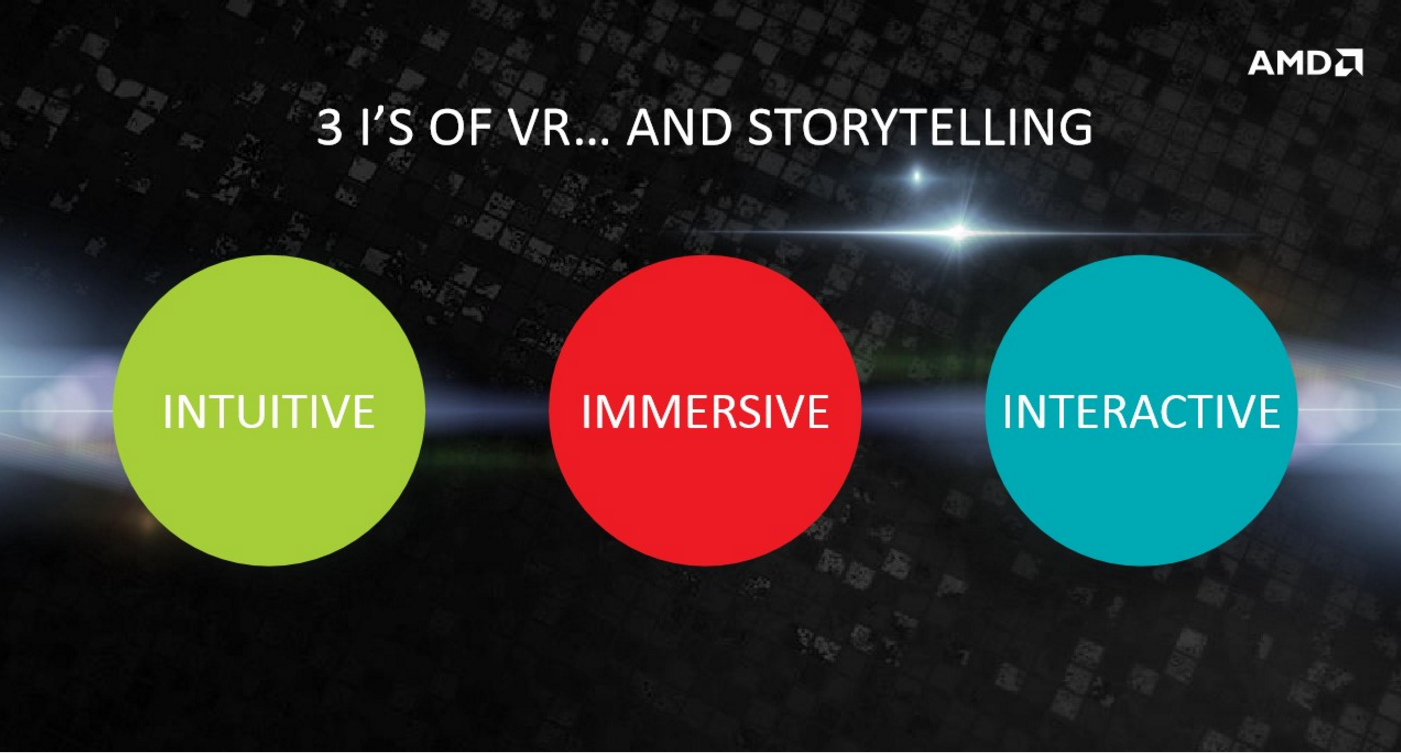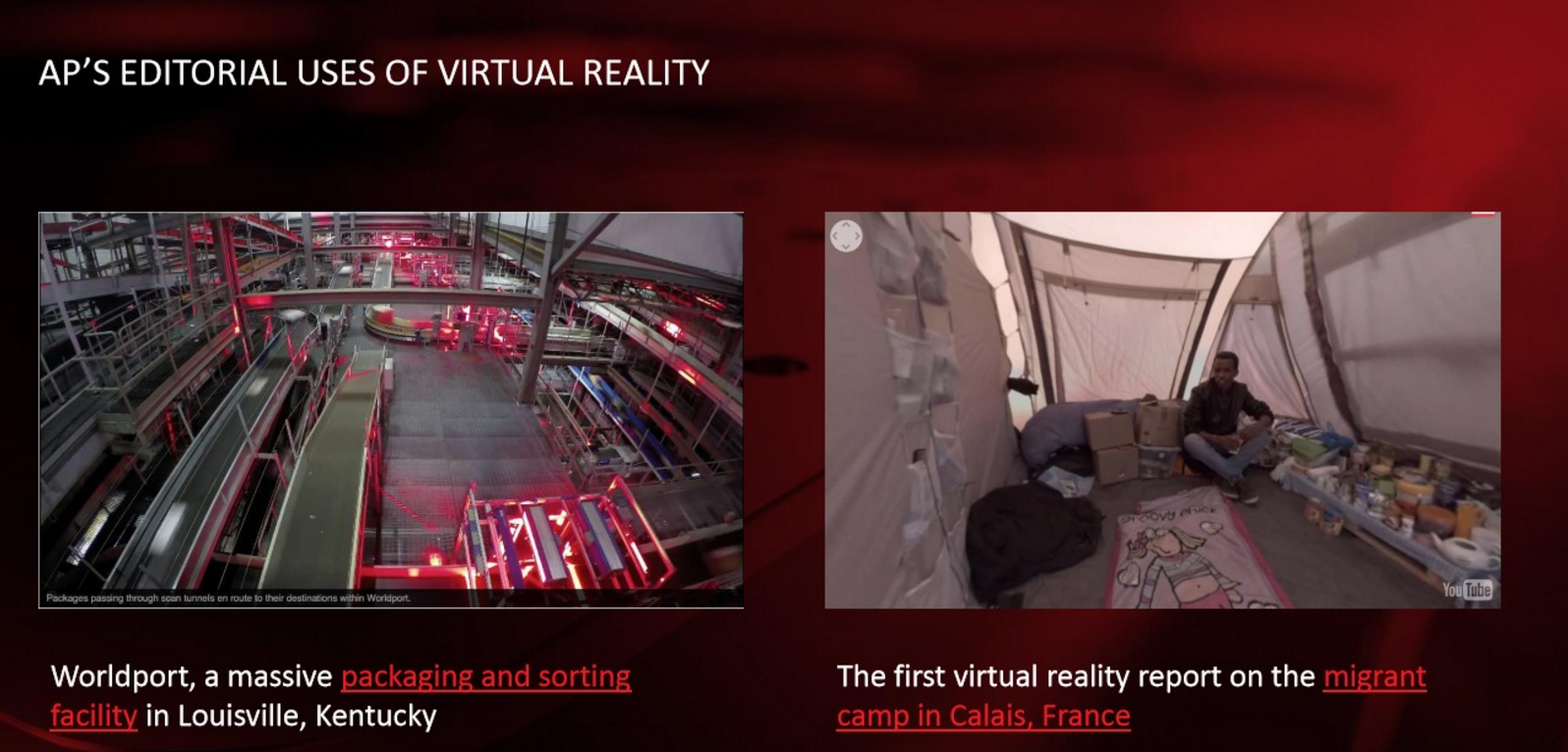AMD, AP Announce Partnership To Foster VR Journalism

Virtual reality is starting to gain major mainstream traction, with many companies embracing the new medium in different ways. Conan O'Brien broadcasted several episodes of his show in 360-degree video, and a presidential debate was recently taped in 360 degrees, as well. In the fall, The New York Times gave away over 1 million Google Cardboard viewers to its readership and began providing unique immersive video content for people to enjoy.

Today, the Associated Press announced that it is also embracing the new medium, and that it has entered a partnership with AMD to use AMD hardware and the Liquid VR toolset to produce high quality VR news content.
“AMD will provide substantial value to the Associated Press in the form of VR expertise with best in class development platforms and post production support to enhance the VR news experience,” said Sasa Marinkovic, Global Head of VR Marketing, AMD.
Paul Cheung, Director of Interactive And Digital New Production, Associated Press, said that the AP has had a “rich history working with emerging technologies” throughout its 170 year history. In 1889, the Associated Press used a wireless telegraph to broadcast the results of the America’s Cup yacht race. Cheung said this was the first test of broadcast news radio. Cheung said the AP was also the first news organization to publish a digital image (1980s), and the first to embrace digital cameras (partnership with Kodak in 1994).
“Each new publishing technology reinvents how we experience news, and VR promises the next revolution by immersing us deep in a story,” said Cheung. “With AMD’s collaboration, AP will leverage their expertise in image rendering and graphic technology so that we can enhance and strengthen the VR news experience.”
The Associated Press isn’t the first news organization to embrace VR, but Cheung said the company has been experimenting with different types of VR experiences since August 2015. Cheung said that the company is looking at all sorts of different options, including 360-degree video, stereoscopic 360-degree content, and even 3D rendered environments, for different kinds of storytelling.
The AP is launching a VR content channel today where you can find all of the company’s future immersive news content. Examples of things you can expect to see include news stories, documentaries and special interest pieces.
Get Tom's Hardware's best news and in-depth reviews, straight to your inbox.

Cheung said that the AP has already created a number of videos for the channel. You can experience what it’s like to fly in extreme luxury in the $18,000 First Class Suite on Singapore airlines. You can also live out your fantasies of living like a billionaire by taking a tour of one of the most expensive luxury hotel suites in the world, the $50,000 per night Ty Warner Penthouse in New York City. Cheung also noted that there is a video of the UPS World Port packing facility that takes you on a 360-degree ride-along with a box going through the facility, and a virtual reality report giving a first person glimpse of what it’s like living in the migrant camp in Calais, France.
The 360-degree and VR video channel can be found within the Associated Press mobile app. Versions of the app are available for iOS and Android devices.
Follow Kevin Carbotte @pumcypuhoy. Follow us on Facebook, Google+, RSS, Twitter and YouTube
Kevin Carbotte is a contributing writer for Tom's Hardware who primarily covers VR and AR hardware. He has been writing for us for more than four years.
-
Uri___Pisarev Biased political reporting in VR..............no thank you. Especially not from NYTimes.Reply -
bit_user Reply
The AP is not NYT. That was just an aside. As I understand it, the AP is basically consists of a bunch of freelance journalists, and exists to sell their content to different news outlets. This avoids news organizations each needing to have a correspondent in every news hotspot around the world.17518221 said:Biased political reporting in VR..............no thank you. Especially not from NYTimes.
VR has been shown to evoke a greater degree of empathy, on the part of the viewer. I expect it will be a powerful propaganda tool, used by all sorts of different political groups, corporations, and special interest groups. Even terrorists.
But I generally like the idea of reporters using it. Sometimes, I'll read or watch a story and wonder what it's like to actually be there. This will get us one step closer. That said, I don't see this as my standard medium for news. Only for stories that really interest me. -
WesleyEley56 I am impressed it is complete information for me. Rather, I was looking for answers regarding VR journalism that I got here. BravoReply